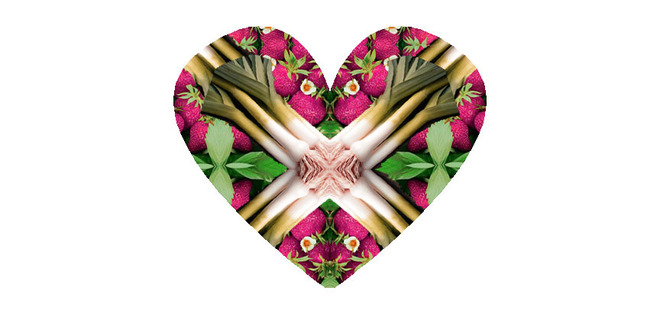 It seems that in almost every farmer's book or blog there's a good page or two devoted to waxing romantic about getting cosy with their favorite seed catalogs during the downtime of the winter months. Late this fall, I eagerly awaited the arrival of the three that I had signed up for, ready to join the club and experience this supposedly blissful experience first hand. Sadly, after weeks of waiting it appeared that they would not be coming (maybe because our current address is a P.O. box?). Luckily the three companies that we had wanted to buy from also have online catalogs. For the past few nights we've been getting cozy...with the laptop. Although slightly less romantic, it does the trick! We started with bush beans for drying and within moments I was hooked. Transported from our tiny bedroom in Brooklyn to our farm in early summer, we imagined our first full blown garden as we planned what it would hopefully bear. I have a feeling that in our excitement we may have gone a teensy bit overboard. We tried to stay on the conservative side but also let ourselves play a bit with variety (as in: we eat lots of carrots so we went with an early season variety as well as the fun rainbow variety I couldn't resist for later in the season).
It seems that in almost every farmer's book or blog there's a good page or two devoted to waxing romantic about getting cosy with their favorite seed catalogs during the downtime of the winter months. Late this fall, I eagerly awaited the arrival of the three that I had signed up for, ready to join the club and experience this supposedly blissful experience first hand. Sadly, after weeks of waiting it appeared that they would not be coming (maybe because our current address is a P.O. box?). Luckily the three companies that we had wanted to buy from also have online catalogs. For the past few nights we've been getting cozy...with the laptop. Although slightly less romantic, it does the trick! We started with bush beans for drying and within moments I was hooked. Transported from our tiny bedroom in Brooklyn to our farm in early summer, we imagined our first full blown garden as we planned what it would hopefully bear. I have a feeling that in our excitement we may have gone a teensy bit overboard. We tried to stay on the conservative side but also let ourselves play a bit with variety (as in: we eat lots of carrots so we went with an early season variety as well as the fun rainbow variety I couldn't resist for later in the season).
While snuggled in bed oogling golden beets I realized that I needed to get a move on, step up the studying, and learn how to actually grow these beauties! I've done pole beans and greens in a little yard we had at one apartment several years ago, but that's about the extent of my experience. I've got a lot of learning to do and although most of it is going to happen with my hands in the dirt this spring, I'm trying to get as much in as I can now.
Masanobu Fukuoka's One Straw Revolution was one of the first books on agriculture and farming that I read when Scrapple and I first started our farm studies and remains one of the most inspiring. I highly recommend it! I've been very much inspired by his approach and although I won't be letting things be quite so wild, I'd like to work with the soil and plants as much as possible. Some topics along that bent that I've enjoyed reading about are permaculture and companion planting. The idea of letting plants work together, protect, and help feed each other is fascinating and I can't wait to start trying some of it out this spring! As he's been quite the procurer of cool, old, and/or out of print texts since we've started down this path, I shouldn't have been surprised when Scrapple handed me an amazing book about Companion Plainting... But I was! It's a gem.
Companion Planting, Successful Gardening The Organic Way by Gertrud Franck was originally published in 1980 in Germany. In 1983 it was published, translated to English by a publisher in Great Britian. It's last printing was in 1986, but you can find it here. Gertrude was quite a wise woman and her book is based on "more than 30 years of observation and practical experience...in a garden who's main purpose was to provide food for a large household of people and animals". Her method of companion planting is modeled after nature where "...all plants grow together in dependence on one another, and each plant community exists in harmony with its environment and is not interchangeable with any other community" and "neither monoculture nor patches of bare soil unclothed with vegetation are to be found". That's what I'm talkin' about! Her keen eye, obvious love of nature, and sage thoughts have made me quite fond of her. I hope you'll check it out and enjoy her ideas and writing as much as I have while reading it this week.
To pique your interest, here are some interesting tidbits I read today:
Leeks and Strawberries
Plant your leeks in your strawberry bed. Strawberries provide ground cover, helping to hold the soil and retain moisture and in turn are protected from nematodes by the leeks. When ready to harvest in the Spring, the leeks can be dug up with a small tool that you will use to cut them just above root level. The roots will stay in the ground where they will rot and provide food for earthworms and nutrients for the strawberries.
Borage and Brassica
You may be familiar with borage, but Scrapple and I were recently introduced this past August at a farm house dinner in Puglia. It was used in a sauce and was unforgettably delicious. To us, it tasted a bit like cucumber with a slight lemony pucker. I asked the chef what it was, and when I had no translation for the word "borragine" she brought us a sprig of it to feel and taste. I'd never even heard of it before in English or Italian, but Gertrude knew what was up. Try it. Borage's leaves are so hairy that snails can't bear to touch them. Planted next to kohlrabi, broccoli, or any member of the brassica family, it protects them from pests.
These don't even scratch the surface of the contents of this book. In addition to her philosophy on and clear instructions in companion planting, it goes through everything from composting, raising and culturing earthworms, to food and herb preservation methods and recipes.
Hope you enjoy!

